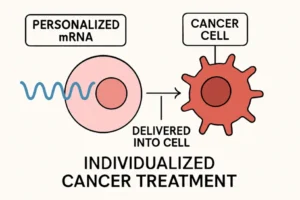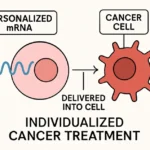Healthcare professionals today are increasingly burdened by time-consuming administrative work, pulling their attention away from the heart of their vocation, caring for patients. Lengthy documentation requirements, complex reporting demands, and repetitive clerical tasks have become significant barriers to delivering timely, personalized care. This growing administrative load not only drains clinicians’ energy but also impacts patient satisfaction and the overall efficiency of healthcare systems.
Emerging solutions like ambient scribe technology are reshaping this landscape, offering a path to streamline documentation and restore valuable time for meaningful patient interactions.
Understanding Ambient Scribes: Beyond Traditional Medical Documentation
Modern healthcare demands a complete rethinking of how we approach clinical documentation. The old methods simply can’t keep up with today’s patient volumes and regulatory requirements.
Healthcare Technology Evolution from Manual to AI-Powered Documentation
Ambient clinical documentation has ushered in the next frontier in medical record keeping, employing sophisticated artificial intelligence to capture patient encounters without disrupting the natural flow of conversation. Unlike traditional voice recognition systems that require specific commands and formatting, these advanced tools listen passively to clinical interactions and automatically generate structured notes.
The technology works by processing natural speech patterns in real time. Multiple microphones strategically placed in examination rooms capture conversations, while advanced algorithms filter out background noise and identify key medical information. The system then transforms these conversations into comprehensive clinical notes that integrate seamlessly with existing electronic health record systems.
Core Components of Modern Ambient Scribes
The foundation of effective ambient scribes relies on several interconnected technologies working together. Natural Language Processing engines analyze spoken words and understand medical terminology in context. Machine learning algorithms continuously improve accuracy by learning from each interaction.
Speaker identification technology distinguishes between different voices in the room, properly attributing statements to patients, clinicians, or family members. This ensures accurate documentation of who said what during complex consultations involving multiple participants.
These systems generate SOAP notes automatically, organizing information into the structured format that clinicians expect while maintaining the nuanced details that make each patient encounter unique.
Quantified Impact: Clinician Productivity Gains Through Ambient Documentation
The promise of time savings becomes reality when we examine actual implementation results. Real healthcare systems are seeing transformative changes in their daily operations.
Time Savings Across Medical Specialties
Different medical specialties experience varying levels of benefit from ambient scribes, but the improvements are consistently significant. Primary care physicians report average daily savings of 70+ minutes, allowing them to see additional patients or spend more quality time with existing ones.
Emergency medicine shows even more dramatic results, with some departments reporting 85+ minutes saved per shift. The fast-paced environment of emergency care particularly benefits from technology that can keep up with rapid patient turnover without sacrificing documentation quality.
Specialized practices like cardiology and orthopedics see savings ranging from 45 to 90 minutes daily, depending on the complexity of their typical patient encounters and documentation requirements.
Patient Interaction Quality Improvements
The adoption of ambient AI scribe technology is transforming clinical workflows, enabling healthcare providers to focus more on patient care and less on administrative burdens. By streamlining documentation and integrating seamlessly into existing systems, these tools are proving both scalable and highly effective across diverse healthcare environments.
When doctors aren’t constantly looking at computer screens or frantically typing notes, patient interaction becomes more natural and engaging. Studies show 65% increases in eye contact during consultations and 40% improvements in patient satisfaction scores. These aren’t just numbers – they represent meaningful improvements in the doctor-patient relationship.
Documentation Accuracy and Completeness Metrics
Medical documentation quality improves dramatically when ambient scribes handle the heavy lifting. Accuracy rates consistently exceed 94% for clinical note generation, with 30% improvements in billing code capture and 78% reductions in documentation errors.
These improvements translate directly into better patient care and reduced liability risks. Complete, accurate documentation supports better clinical decision-making and ensures proper communication between healthcare team members.
Specialty Applications: Maximizing Patient Interaction Across Practice Types
Different medical specialties have discovered unique ways to leverage ambient scribes for their specific workflows and patient needs.
Primary Care and Family Medicine Optimization
Family physicians juggle an incredible variety of patient needs, from routine checkups to complex chronic disease management. Ambient scribes excel in these varied environments, adapting to different types of conversations and medical issues within the same practice day.
Chronic disease management becomes more efficient when detailed progress notes are generated automatically. Doctors can focus on patient education and care plan adjustments rather than worrying about capturing every detail for the medical record.
Emergency Department Implementation
Emergency departments present unique challenges for documentation. Critical decisions happen quickly, and every minute counts for patient outcomes. Traditional documentation methods often create dangerous delays or force incomplete record-keeping.
Ambient scribes thrive in this high-pressure environment, capturing crucial information even during chaotic situations. Trauma cases receive real-time documentation without pulling staff away from life-saving interventions.
Mental Health and Behavioral Practices
Mental health professionals face particular documentation challenges because therapeutic conversations require complete attention and emotional presence. Taking notes during sessions can disrupt the therapeutic relationship and interrupt important emotional moments.
Healthcare technology designed for mental health settings addresses privacy concerns while enabling therapists to remain fully present with their patients. Treatment plan documentation happens automatically, freeing therapists to focus entirely on the human connection that drives healing.
Patient Experience Revolution: Enhanced Care Through Technology
The transformation extends far beyond clinical efficiency gains. Patients notice the difference immediately when their doctors can focus completely on the conversation at hand.
Trust and Transparency in Clinical Documentation
Patients appreciate knowing that their doctors are listening attentively rather than dividing attention between conversation and computer screens. Most healthcare systems report high patient acceptance rates when the technology is properly explained and consent is obtained transparently.
Real-time documentation sharing capabilities allow patients to review visit summaries immediately, improving understanding and compliance with treatment recommendations. This transparency builds trust and ensures everyone leaves with the same understanding of the care plan.
Communication Quality Improvements
Patient interaction quality improves measurably when ambient scribes handle documentation duties. Conversations flow more naturally without constant interruptions for note-taking or computer entry. Non-verbal cues receive proper attention, and cultural sensitivity increases when doctors can focus completely on understanding their patients’ perspectives.
These improvements create lasting impacts on patient satisfaction and health outcomes. Patients feel heard, understood, and valued when their doctors can maintain natural eye contact and engaged body language throughout the encounter.
Implementation and Future of Ambient Scribes
Successfully adapting ambient scribes requires careful planning and realistic expectations about the transition process.
Best Practices for Healthcare Technology Adoption
Successful implementations start with thorough workflow analysis and staff readiness assessments. Training programs should address both technical aspects and communication strategies for explaining the technology to patients.
Phased rollout strategies work better than attempting full-scale implementation immediately. Starting with volunteer early adopters helps identify potential issues before system-wide deployment.
Emerging Trends and Innovations
The future holds exciting possibilities for ambient scribes beyond basic documentation. Integration with predictive analytics could help identify at-risk patients earlier. Multi-modal documentation might incorporate visual recognition and gesture analysis for even more comprehensive record keeping.
Clinician productivity improvements will likely extend into clinical decision support, with AI systems offering evidence-based recommendations during patient encounters. These advances promise to make healthcare more efficient while maintaining the human touch that patients value.
Final Thoughts on Ambient Scribes
Ambient scribes represent more than just a technological upgrade – they’re restoring the heart of healthcare by giving doctors time to practice medicine. The combination of improved clinician productivity, enhanced patient interaction, and more accurate medical documentation creates a win-win situation for everyone involved.
As healthcare technology continues evolving, early adopters of ambient scribes are already experiencing the benefits while positioning themselves for future innovations. The question isn’t whether this technology will become standard – it’s whether your practice will lead the transformation or follow behind.
Common Questions About Ambient Scribes
What is an ambient scribe?
Ambient scribing products involve tools that use advanced speech technologies to automatically convert spoken words into text and other outputs, requiring minimal user intervention. They are designed to support clinical or patient documentation and workflows.
How much time do ambient scribes save?
Most clinicians report saving 1–2 hours daily on documentation tasks, with some specialties seeing even greater time savings during busy shifts.
Do patients feel comfortable recording technology?
Studies show over 85% patient acceptance rates when the technology is properly explained and transparent consent processes are followed consistently.
Also Read-What Your Mouth Says About Your Overall Health










